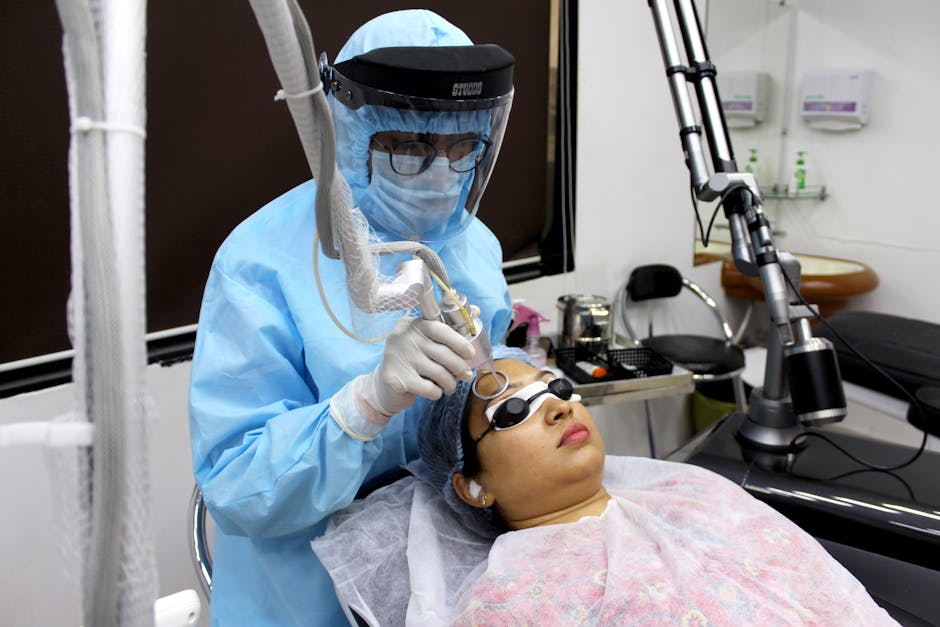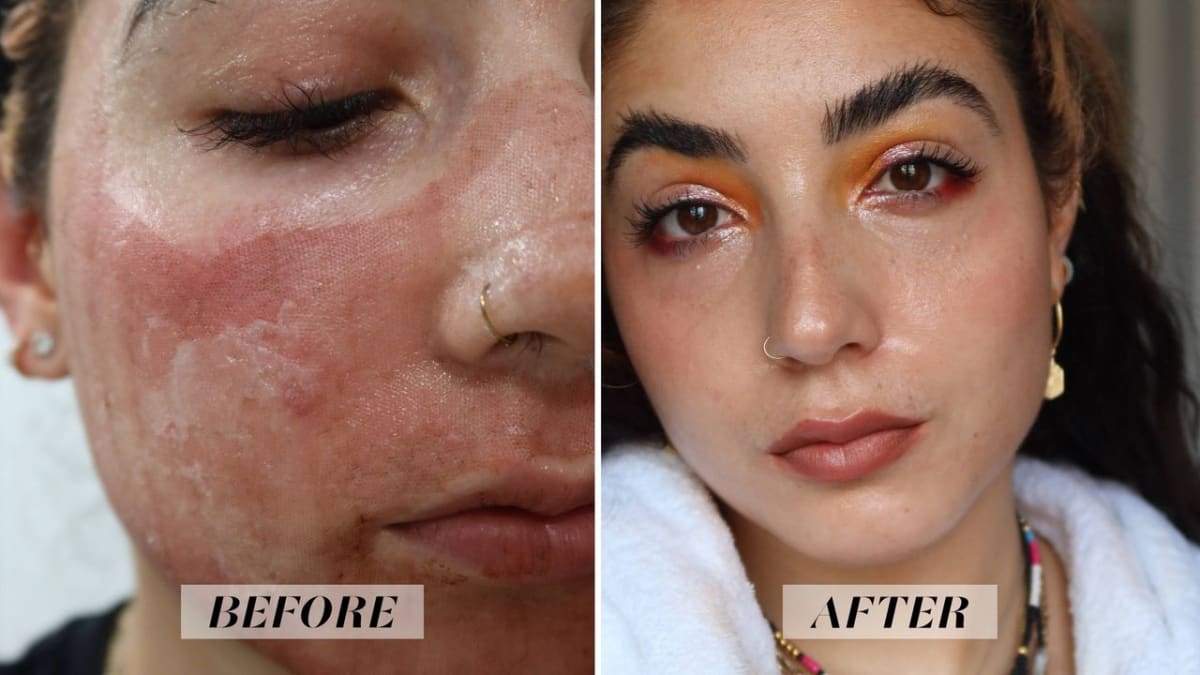Get Your AI Analysis
Personalized skincare insights
Discover your perfect skincare routine with our AI-powered analysis. Get personalized recommendations for glowing, healthy skin.
Start AnalysisFollow Us
Stay updated with the latest skincare tips, trends, and expert advice.
Post-Inflammatory Issues: Healing Skin After Breakouts
As a skincare veteran with over a decade in this industry, I’ve seen countless clients experience the profound frustration that lingers long after a breakout has subsided. The pimple itself vanishes, but it often leaves an unwelcome calling card: a dark spot, a red patch, or even a noticeable textural change. This isn't just a minor annoyance; it can significantly impact self-confidence and prolong the journey to clear, even-toned skin. Today, we're diving deep into the world of post-inflammatory issues, specifically focusing on how to effectively heal your skin after breakouts, tackling everything from hyperpigmentation to stubborn scarring.
It’s time to equip you with the knowledge and tools to not just manage, but truly fade these lingering reminders and restore your skin’s natural radiance. Forget quick fixes; we're talking about a strategic, evidence-based approach that combines gentle healing techniques, powerful brightening ingredients, and, when necessary, advanced professional options.

Understanding the Aftermath: PIH, PIE, and Acne Scars
Before we can heal, we must understand exactly what we're dealing with. Not all post-acne marks are created equal, and knowing the difference is crucial for effective treatment.
What is Post-Inflammatory Hyperpigmentation (PIH)?
PIH presents as flat, dark spots (ranging from brown, black, or even purplish) that appear where a breakout once was. It’s caused by an overproduction of melanin, the pigment that gives skin its color, triggered by inflammation or trauma to the skin. This excessive melanin is then deposited into the skin cells, resulting in discoloration. According to research published in the Journal of Clinical and Aesthetic Dermatology, PIH affects 65% of acne patients, with higher prevalence in individuals with darker skin tones.
What is Post-Inflammatory Erythema (PIE)?
Often confused with PIH, PIE manifests as flat, red or pinkish-purple spots. Unlike PIH, PIE is not due to melanin overproduction. Instead, it’s caused by damage to small blood vessels (capillaries) or prolonged inflammation in the skin, which leads to persistent redness. PIE is more common in individuals with lighter skin tones. While PIH darkens with sun exposure, PIE often becomes more pronounced when the skin is flushed.
Understanding Acne Scars
True acne scars involve textural changes to the skin, indicating damage to the collagen and elastin fibers beneath the surface. They are typically permanent without intervention. Scars fall into two main categories:
Atrophic Scars: These are depressions or indentations in the skin, resulting from a loss of tissue. They include:
Ice Pick Scars: Small, deep, and narrow holes.
Boxcar Scars: Broad, oval, or round depressions with sharply defined vertical edges.
Rolling Scars: Broad depressions with sloping edges, giving the skin a wavy, uneven texture.
Hypertrophic/Keloid Scars: These are raised, thickened scars, resulting from an overproduction of collagen during the healing process. They are less common with acne but can occur.
“Early intervention is absolutely critical when it comes to preventing and treating post-inflammatory issues. The longer you wait, especially with true scarring, the more challenging and extensive the treatments often become.”
– Dr. Michelle Wong, Cosmetic Dermatologist

The Golden Rules for Healing: Your Foundation
Regardless of whether you’re dealing with PIH, PIE, or early scarring, these foundational principles are non-negotiable for effective healing.
Rule #1: Sun Protection is Non-Negotiable
This is arguably the most crucial step. UV radiation significantly darkens PIH, makes PIE more persistent, and hinders the healing process. Daily, consistent sun protection is vital. Choose a broad-spectrum sunscreen with an SPF of at least 30, and reapply every two hours, especially if you’re outdoors or sweating.
Product Recommendation: La Roche-Posay Anthelios Melt-in Milk Sunscreen SPF 60 offers excellent broad-spectrum protection in a comfortable, non-comedogenic formula.
Rule #2: Gentle is Key
Aggressive scrubbing, picking, or squeezing will only worsen inflammation, potentially pushing pigment deeper into the skin and increasing the risk of scarring. Treat your healing skin with the utmost care. Use gentle cleansers and avoid harsh physical exfoliants.
Product Recommendation: CeraVe Hydrating Facial Cleanser is a classic for a reason – it cleanses effectively without stripping the skin's barrier.
Rule #3: Hydration, Hydration, Hydration
A well-hydrated skin barrier is a healthy skin barrier. When your skin barrier is compromised, it’s more susceptible to inflammation, slower to heal, and less able to protect itself. Use rich, occlusive moisturizers that contain ceramides, hyaluronic acid, and fatty acids to support barrier function.
Product Recommendation: Paula's Choice CALM Restoring Moisturizer is excellent for sensitive, compromised skin, providing rich hydration and soothing ingredients.
Targeting PIH and PIE: The Ingredient Powerhouses
Once your foundational routine is solid, it's time to introduce targeted ingredients to specifically address hyperpigmentation and redness.
Vitamin C (L-Ascorbic Acid): A potent antioxidant, Vitamin C inhibits tyrosinase (an enzyme essential for melanin production), brightens the skin, and protects against environmental damage.
Product Recommendation: Skinceuticals CE Ferulic is the gold standard, though more budget-friendly options like Mad Hippie Vitamin C Serum also deliver good results.
Niacinamide (Vitamin B3): This superstar ingredient reduces inflammation, strengthens the skin barrier, and interferes with the transfer of melanosomes (pigment packets) to skin cells, thereby reducing PIH.
Product Recommendation: The Ordinary Niacinamide 10% + Zinc 1% is a widely popular and effective serum.
Alpha Arbutin & Kojic Acid: Both are tyrosinase inhibitors, meaning they block the enzyme responsible for melanin production. Alpha Arbutin is a gentler derivative of hydroquinone.
Product Recommendation: The Inkey List Alpha Arbutin Serum is a great affordable option.
Azelaic Acid: Derived from grains, azelaic acid has anti-inflammatory, anti-bacterial, and mild exfoliating properties. It's particularly effective at reducing PIH and also helps with redness and breakouts.
Product Recommendation: Paula's Choice 10% Azelaic Acid Booster or prescription Finacea Gel (15%).
Retinoids (Retinol, Tretinoin): These Vitamin A derivatives accelerate cell turnover, helping to shed pigmented skin cells faster. They also stimulate collagen production, which can indirectly improve skin texture and mild scarring over time.
Product Recommendation: For OTC, try Olay Regenerist Retinol 24 Night Moisturizer. For prescription strength, consult your dermatologist about Tretinoin.
AHAs (Glycolic Acid, Lactic Acid): Alpha Hydroxy Acids gently exfoliate the skin's surface, helping to remove pigmented cells and promote a more even skin tone.
Product Recommendation: The Ordinary Glycolic Acid 7% Toning Solution for gentle exfoliation a few times a week.

Tackling Texture and Scars: Beyond Topical
While topicals can make a difference for PIH and PIE, true acne scars often require professional intervention for significant improvement. However, topical retinoids can offer mild improvement over time by stimulating collagen.
Professional Treatments for PIH & PIE:
Chemical Peels: Light to medium-depth peels (glycolic, salicylic, lactic, TCA) can accelerate cell turnover and lift pigment. They are often done in a series.
IPL (Intense Pulsed Light) / BroadBand Light (BBL): These light-based therapies target both red (PIE) and brown (PIH) discoloration by breaking down pigment and coagulating small vessels.
Pulsed Dye Laser (PDL): Highly effective for significant redness (PIE) by targeting blood vessels, reducing inflammation and erythema.
Professional Treatments for Acne Scars:
For atrophic scars, the goal is to stimulate new collagen production and resurface the skin.
Microneedling: Also known as collagen induction therapy, this procedure uses tiny needles to create controlled micro-injuries, prompting the skin to produce new collagen and elastin. Often done in a series of 3-6 sessions.
Fractional Lasers (e.g., Fraxel, CO2 Lasers): These lasers create microscopic columns of injury in the skin, stimulating profound collagen remodeling and resurfacing the skin's texture. Downtime varies depending on the intensity.
Subcision: For rolling scars, this technique involves using a needle to break up fibrous bands that pull the skin down, allowing the skin to rise.
Dermal Fillers: Injectable hyaluronic acid fillers can temporarily elevate depressed (atrophic) scars, particularly rolling scars, providing immediate improvement.
TCA Cross: A highly concentrated trichloroacetic acid is precisely applied to individual ice pick scars to stimulate collagen and resurface.
“Often, the most effective approach to treating acne scars involves a combination of therapies. For instance, microneedling can be paired with fractional laser treatments, or subcision might be followed by fillers, depending on the scar types and the patient's skin. A personalized plan from a board-certified dermatologist is paramount.”
– Dr. Shereene Idriss, Dermatologist and Skincare Expert

Building Your Healing Skincare Routine
Here’s a simplified routine framework incorporating the principles and ingredients we’ve discussed:
Morning Routine:
Cleanse: Gentle, hydrating cleanser.
Targeted Serum (PIH/PIE): Apply Vitamin C serum (for antioxidant protection and brightening) or Niacinamide/Azelaic Acid.
Moisturize: A hydrating, barrier-supporting moisturizer.
SPF: Broad-spectrum SPF 30+ (non-negotiable!).
Evening Routine:
Double Cleanse: Remove makeup/SPF with an oil cleanser, then follow with your gentle cleanser.
Targeted Treatment (Exfoliation/Cell Turnover): Alternate between a retinoid (Retinol or prescription Tretinoin) and an AHA serum/toner 2-4 nights a week, as tolerated. Do not use retinoids and AHAs on the same night.
Hydrating Serum: If desired, a hyaluronic acid or ceramide serum for extra hydration.
Moisturize: A richer, restorative moisturizer to support overnight repair.
The Patience Factor
Healing post-inflammatory issues takes time and consistency. PIH and PIE can take months to fade, even with diligent treatment, and acne scars require even more patience and often multiple professional sessions. Don't expect overnight miracles. Stick to your routine, protect your skin, and celebrate small improvements along the way.
Remember, your skin is resilient. With the right approach and a little patience, you can significantly improve the appearance of post-breakout marks and restore a healthy, radiant complexion. Embrace the journey to clearer, more confident skin.
